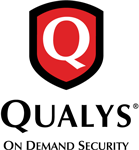Yes, most modern vulnerability management tools can be accessed and utilized from different devices and platforms. These tools are designed to be user-friendly and interoperable with a variety of operating systems, including Windows, Mac, Linux, and mobile devices. This enables seamless vulnerability monitoring and management independent of device or platform, giving users more flexibility and convenience.
List of 20 Best Vulnerability Management Tools
Appknox is an automated scanning tool that easily integrates with various APIs, making it perfect for use in mobile app development. It provides complete automation for SAST, DAST, and API testing, offering a comprehensive solution for securing your...Read More Appknox
Tripwire is a cybersecurity solution that ensures the safety of your organization. Our advanced technology, including file integrity monitoring and security configuration tools, offers real-time threat detection and compliance management. With Tripwi...Read More Tripwire
OpenVAS, developed by Greenbone in 2006, is vulnerability scanning tool that includes options for both non-authenticated and authenticated scans. Updated regularly and with efficient tuning capabilities, it is a top choice for conducting large-scale...Read More OpenVAS
SecurityMetrics is an innovative cybersecurity software that offers a wide range of solutions for businesses to enhance their compliance and protect their data. Our cutting-edge tools, including the Shopping Cart Monitor, assist in accomplishing PCI...Read More SecurityMetrics
Cyberwatch is a IT vulnerability management and compliance solution. With our powerful platform, you can effortlessly monitor assets, prioritize risks, and efficiently deploy security patches in a single click. Maintain a strong cybersecurity stance...Read More Cyberwatch
Demisto solution for streamlined incident management and enhanced SOC effectiveness. With seamless integration of multiple security tools and automation of routine tasks, Demisto enables analysts to efficiently prioritize and address high-risk threat...Read More Demisto
CrowdStrike Falcon - a top-of-the-line endpoint protection solution designed to protect your organization from cyber threats. With advanced detection and response capabilities, Falcon offers comprehensive security and rapid response to attacks. Exper...Read More CrowdStrike Falcon
AlienVault USM - the leading security management software trusted by businesses worldwide. With its unified platform, real-time monitoring, auto-alerts, and comprehensive reporting, it offers unmatched threat detection, incident response, and complia...Read More AlienVault USM
DriveStrike is a security software that provides remote wiping, tracking, and encryption capabilities. It offers advanced features to protect your data, minimize the risk of theft, and ensure compliance for both individuals and businesses that handle...Read More DriveStrike
Qualys Enterprise is a security platform that offers businesses automated vulnerability management, continuous monitoring, and compliance solutions. With its advanced threat detection, simplified reporting, and strong protection, Qualys Enterprise he...Read More Qualys Enterprise
Cryptosense is a cryptography management platform engineered by SandboxAQ. This innovative solution offers continuous inventory management, encryption remediation, and supervised enforcement to fortify IT infrastructures against present and emerging...Read More Cryptosense
Syxsense Manage is a endpoint management solution that streamlines your IT operations and boosts efficiency. With its comprehensive features, get real-time insights, automate patching, and effortlessly manage your devices with complete control. From...Read More Syxsense Manage
Strobes RBVM solution for vulnerability management. This comprehensive platform simplifies the entire process, from identifying and prioritizing risks to implementing effective mitigations. By utilizing Strobes RBVM, you can automate your cybersecuri...Read More Strobes RBVM
Cisco Vulnerability Management is a solution developed by Cisco Systems to discover and handle security vulnerabilities in an organizations network and software. This suite of tools and services helps in detecting potential risks and offers recommend...Read More Cisco Vulnerability Management
Veracode Vulnerability Management - your ultimate solution for identifying, prioritizing, and addressing security vulnerabilities. Utilizing advanced techniques such as dynamic analysis and automated scans, it provides real-time insights and detailed...Read More Veracode Vulnerability Management
HackerOne is a security platform that leverages the skills of ethical hackers to identify and address vulnerabilities in your operations, ensuring robust protection for your digital resources. With features such as ongoing testing, attack surface man...Read More HackerOne
Netsparker is a leading web application security solution that effectively identifies vulnerabilities while minimizing false positives. Seamlessly integrating into your software development process, our tool offers comprehensive protection for all yo...Read More Netsparker
Continuity Engine solution for maintaining optimal operations and preventing downtime for your critical applications. This advanced software boasts fast failover and failback capabilities, providing uninterrupted business continuity and peace of mind...Read More Continuity Engine
Probely is an innovative security software that offers comprehensive vulnerability detection for web applications. Its user-friendly reports and seamless integration make it a top choice for developers seeking to enhance their security measures with...Read More Probely
Acunetix is a web application security testing tool that efficiently detects and resolves vulnerabilities. Its advanced features make it easy to integrate into development processes, providing complete protection with minimal effort. With Acunetix, y...Read More Acunetix
Learn More About Vulnerability Management Tools
- What Is Vulnerability Management Tools?
- What Are The Recent Trends In Vulnerability Management Tools?
- Benefits Of Using Vulnerability Management Tools
- Important Factors To Consider While Purchasing Vulnerability Management Tools?
- What Are The Key Features To Look For In Vulnerability Management Tools?
- Why Do Businesses Need Vulnerability Management Tools?
- How Much Time Is Required To Implement Vulnerability Management Tools?
- What Is The Level Of Customization Available In Vulnerability Management Tools?
- Which Industries Can Benefit The Most From Vulnerability Management Tools?
- Conclusion
What Is Vulnerability Management Tools?
Vulnerability management tools are software solutions that help organizations find, assess, and prioritize potential security vulnerabilities in their systems and networks. These technologies not only discover vulnerabilities, but also offer mitigation options, assuring the entire safety and security of an organization's digital assets. A decent vulnerability management platform should provide comprehensive and automatic vulnerability scans for internal and external systems.
It should also give full reports and analyses of detected vulnerabilities, including severity levels and remedial recommendations. Furthermore, an ideal tool should be able to work with other security solutions, such as firewalls and intrusion detection systems, to improve its efficiency. It should also provide customizable capabilities that enable organizations to personalize scans and reports to their specific requirements.
When selecting a vulnerability management platform, look for capabilities such as real-time monitoring, risk assessment, and the ability to prioritize vulnerabilities based on their impact on the organization. Furthermore, the tool should have a simple interface and provide technical help for any problems that may emerge. Investing in a high-quality vulnerability management platform can help an organization's overall security posture by offering continuous protection against prospective threats. Take the time to carefully study and compare many possibilities to determine the best tool for your organization's specific requirements.
What Are The Recent Trends In Vulnerability Management Tools?
As the threat landscape evolves, organizations are continually looking for innovative ways to secure critical data and systems from cyber attacks. This has resulted in an increase in demand for vulnerability management technologies that may assist firms in identifying and addressing potential security flaws. In recent years, there have been some major trends in the area of vulnerability management technologies, all geared at meeting businesses' increasing demands and difficulties.
1. Increased Automation: Automation has become a popular feature in vulnerability management systems. Manual techniques are no longer sufficient to screen for vulnerabilities as the number of assets and apps grows. As a result, several companies are introducing automation into security systems, which enables faster and more efficient vulnerability screening and mitigation.
2. Integration With DevOps: As the DevOps culture spreads, vulnerability management solutions are being incorporated into the development process to detect and resolve vulnerabilities as early as possible. This allows enterprises to resolve security risks while building and deploying apps, rather than after they have been deployed.
3. Cloud-Based Solutions: As more businesses migrate to the cloud, vulnerability management technologies are following suit. Cloud-based solutions provide better scalability, flexibility, and remote access, making them perfect for enterprises with a dispersed workforce or those that operate numerous sites.
4. Artificial Intelligence And Machine Learning: AI and machine learning are being used in vulnerability management systems to improve detection accuracy and reduce false positives. These tools can also analyze data and discover patterns to forecast potential future risks, allowing businesses to take preventative measures.
5. Prioritize User Experience: User experience has emerged as a critical factor in the design of vulnerability management systems. Vendors are now working on providing intuitive and user-friendly interfaces to help non-technical people explore and comprehend the technology.
6. Increased Customization And Flexibility: Another trend in vulnerability management systems is the ability to adapt and tailor the tool to meet the unique demands of a business. This includes features like configurable dashboards, vulnerability prioritization based on severity, and integration with other security systems.
Benefits Of Using Vulnerability Management Tools
Vulnerability management technologies are critical for any company seeking to maintain a safe and stable network infrastructure. These technologies have numerous benefits, making them a worthwhile investment for businesses of all sizes.
We'll look at the primary benefits of adopting vulnerability management solutions and why they're an essential part of your cybersecurity strategy.
1. Identifies And Prioritizes Vulnerabilities: Using vulnerability management technologies allows you to find potential holes in your system. These tools examine your network, applications, and devices for vulnerabilities and classify them according to their severity. This enables you to prioritize which vulnerabilities must be addressed immediately, saving you time and effort in the long run.
2. Proactive Risk Management: With vulnerability management solutions, you may adopt a proactive approach to risk management. Instead of waiting for a cyber assault to exploit a weakness, these technologies keep you ahead of potential dangers by constantly monitoring and assessing your system for flaws. This enables you to address flaws before they are exploited by hackers, avoiding severe data breaches and financial losses.
3. Saves Time And Resources: With the growing number of cyber attacks and the complexity of systems, manually detecting and resolving vulnerabilities is a difficult and time-consuming operation. Vulnerability management tools automate the process, saving time and resources on manual vulnerability assessments and repair. This allows your IT team to focus on more important activities, increasing your organization's efficiency and productivity.
4. Improved Compliance: In today's business environment, compliance with industry norms and standards is critical. Vulnerability management tools assist you in maintaining compliance by regularly scanning your system for vulnerabilities that could jeopardize your organization's security. By swiftly correcting these concerns, you can demonstrate your adherence to cybersecurity requirements and avoid penalties.
5. Cost-Effective Solution: Investing in vulnerability management solutions is less expensive than the possible financial losses from a cyber assault. Proactively detecting and correcting vulnerabilities can help you avoid costly data breaches, reputational damage, and regulatory fines. This makes vulnerability management technologies an affordable and necessary tool for enterprises of all sizes.
Important Factors To Consider While Purchasing Vulnerability Management Tools?
When it comes to protecting your organization's data and systems, having the correct vulnerability management solutions is essential. These technologies assist you in identifying and addressing potential vulnerabilities in your network, apps, and devices, hence preventing cyber assaults and data breaches. There are several critical considerations when purchasing vulnerability management software.
Here are the essential factors to examine to ensure you make the best option for your business:
1. Scanning And Detection Capabilities: One of the primary responsibilities of vulnerability management software is to search your network and systems for potential flaws. This means you'll need a solution with powerful, dependable scanning capabilities that can detect a wide range of vulnerabilities. Look for technologies that provide both automated and manual scanning alternatives to ensure that you cover all bases.
2. Integration With Existing Systems: Each firm has a unique set of IT systems and security technologies. When selecting a vulnerability management product, you should examine how well it will interact with your current infrastructure. This not only ensures a smooth installation process, but also allows your tools to collaborate seamlessly for effective vulnerability management.
3. Reporting And Analytics: Another important consideration is the tool's ability to report and analyze data. A effective vulnerability management platform should generate clear and understandable reports on the vulnerabilities discovered and the actions taken to address them. Look for solutions with customisable reporting and data visualization options to help you track and assess your organization's security status.
4. Real-Time Monitoring And Remediation: Because vulnerability management is an ongoing activity and threats can occur at any time, real-time monitoring and remediation are critical. Look for solutions that provide real-time scanning and monitoring, as well as the ability to automate remediation processes to ensure that vulnerabilities are resolved immediately.
5. Scalability And Flexibility: As your firm expands, so will your security requirements. It's critical to select a vulnerability management tool that can scale and adapt to your evolving needs. Whether you're adding new devices, networks, or applications, your tool should be able to accommodate your expanding environment while also providing deployment flexibility.
6. Technical Assistance And Training: Implementing and monitoring vulnerability management technologies can be a complex process, so it's critical to select a provider who provides complete technical assistance and training. This ensures that your staff is prepared to utilize the product efficiently and troubleshoot any issues that may emerge.
What Are The Key Features To Look For In Vulnerability Management Tools?
Vulnerability management is an important part of any cybersecurity strategy since it allows firms to discover and remedy any vulnerabilities in their systems. However, with the increasing complexity of technology and the changing nature of threats, manually maintaining vulnerabilities is no longer an option. This is where vulnerability management technologies come into play: they automate the process of discovering, prioritizing, and addressing vulnerabilities, saving time and resources while maintaining complete security. However, not all vulnerability management tools are created equal. With so many options available, it can be difficult for consumers to select the best one for their firm.
To make an informed decision, here are some crucial aspects to look for in vulnerability management tools:
1. Comprehensive Vulnerability Assessment: The first and most important feature to look for in a vulnerability management program is the ability to conduct a thorough vulnerability assessment. This includes scanning all systems, devices, and applications for network and host-based vulnerabilities.
2. Real-time Monitoring: An effective vulnerability management platform should be able to detect and respond to possible attacks in real time. This feature gives constant visibility into the organization's security posture, assisting in the prevention of possible breaches.
3. Prioritization And Risk Scoring: Not all vulnerabilities are created equal, therefore prioritize and address the most significant ones first. Look for a solution that allows you to score or prioritize risks based on aspects like the vulnerability's effect and exploitation potential.
4. Integration Capabilities: A vulnerability management tool should be able to communicate with other security tools and systems in order to provide a complete picture of an organization's security posture. This improves the tool's effectiveness while also streamlining security procedures.
5. Patch Management: Fixing vulnerabilities entails installing security patches and updates. Look for a vulnerability management program that has patch management capabilities, so you can automate the patching process and save time and costs.
6. Reporting And Analytics: To effectively manage vulnerabilities, you must understand their breadth, patterns, and progress. A good vulnerability management tool should give extensive data and analytics to help users understand the state of vulnerabilities and make informed security decisions.
7. User-Friendly Interface: The adoption and efficacy of any technology are dependent on its user-friendliness and intuitiveness. Look for a vulnerability management platform with an easy-to-use interface that allows security teams to effectively handle vulnerabilities.
Why Do Businesses Need Vulnerability Management Tools?
Businesses today face an increasing number of cyber attacks, therefore it is critical to have a strong protection strategy in place. One critical component of this technique is vulnerability management. Businesses use vulnerability management solutions to discover, prioritize, and remedy security vulnerabilities in their systems and networks. In today's digital landscape, cyber attacks are growing more sophisticated, making it easier for hackers to exploit weaknesses in enterprise systems.
This can lead to data breaches, financial losses, and reputational damage. Furthermore, with the rise of cloud computing, mobile devices, and BYOD policies, firms' attack surface has grown, making it even more difficult to manage security concerns. Vulnerability management technologies offer enterprises a comprehensive solution for proactively identifying and addressing any holes in their IT infrastructure.
These solutions help firms manage their security posture by combining vulnerability scans, risk assessments, and reporting capabilities. Businesses that scan for vulnerabilities on a regular basis can more efficiently prioritize and address high-risk threats before they are exploited by criminal actors. In addition to finding vulnerabilities, these technologies provide patch administration, configuration management, and compliance reporting.
This enables enterprises to deploy security patches fast, enforce security configurations, and maintain compliance with industry requirements and standards. Such preventative steps can dramatically lower the likelihood of a successful cyberattack while also protecting customer data and important corporate information. Furthermore, vulnerability management systems are intended to be user-friendly and configurable, making them appropriate for companies of different sizes and sectors.
They enable firms to adjust their security approach to their individual requirements rather than depending on a one-size-fits-all solution. Investing in vulnerability management technologies not only helps businesses reduce security risks, but it also indicates a commitment to data protection and compliance, which fosters trust among customers and partners. It is an essential component of any modern cybersecurity strategy and a prudent investment for firms seeking to protect their digital assets and preserve a competitive advantage in today's cyber market.
How Much Time Is Required To Implement Vulnerability Management Tools?
The timescale for installing vulnerability management solutions varies based on the size of your organization, the complexity of your IT infrastructure, and the exact features and capabilities of the tool you select. However, on average, it can take a few weeks to several months to properly incorporate the technology into your security architecture.
The first step in establishing a vulnerability management solution is to establish your organization's security objectives and priorities. This will assist you in determining the exact features and capabilities required in a tool, as well as providing a better estimate of the implementation duration. The next step is to undertake a thorough examination of your present IT infrastructure to discover any existing vulnerabilities or areas of weakness.
This evaluation may include vulnerability scanning, penetration testing, and risk assessments to gain a thorough understanding of your network and systems. Once you have a better grasp of your security requirements, you can begin the process of choosing the best vulnerability management technology for your needs. This may entail investigating various providers, assessing demos and trials, and performing a cost-benefit analysis to ensure you are getting the best value for your investment.
Once you've decided on a tool, the actual implementation phase can begin. This usually entails installing the tool on your network, integrating it with your existing security systems and processes, and teaching your IT staff on how to use it successfully. The time required to accomplish this phase varies according to the complexity of your IT infrastructure and the tool's features.
Following the initial implementation, your vulnerability management tool should be monitored and updated on a regular basis to ensure that it reflects any changes in your IT environment and continues to successfully discover and mitigate issues. Ongoing maintenance and updates are critical for making the most of your investment and ensuring your organization's security posture stays robust.
What Is The Level Of Customization Available In Vulnerability Management Tools?
Vulnerability management technologies are critical for any organization seeking to proactively defend its systems and data against cyber threats. When deciding which vulnerability management product to invest in, it is critical to understand the level of customisation offered. This ensures that the tool fulfills the specific demands and expectations of your company. The level of customization possible in vulnerability management tools varies by tool and vendor. However, most programs provide a variety of customization choices to assist you personalize the tool to your organization's exact needs.
These customisation options may include:
1. Scanning Frequency: One of the primary benefits of vulnerability management technologies is their ability to scan your systems for potential vulnerabilities. With variable scanning frequencies, you may control how frequently the tool scans your systems based on your organization's risk profile and resource availability.
2. Remediation Workflow: After identifying vulnerabilities, the technology should provide customisable remediation workflows. This enables you to identify and prioritize remedial actions based on the severity of the vulnerability, your organization's policies, and available resources.
3. Reporting And Dashboards: Customizable reporting and dashboards let you to view and track system vulnerabilities in a way that is appropriate for your organization. This may involve adjusting the level of detail, formatting, and frequency of reports.
4. Integrations: Another key component of customisation is the ability to connect the vulnerability management tool to other security products and platforms. This can assist streamline operations and improve the overall security posture.
5. User Roles And Permissions: Larger businesses may require varying levels of access and permissions for different users. Customizable user roles and permissions allow you to choose who has access to the vulnerability management tool and what actions they can take. It is vital to highlight that, while customization options are beneficial, they necessitate skill and resources to efficiently adopt and administer.
Which Industries Can Benefit The Most From Vulnerability Management Tools?
Vulnerability management technologies are critical for organizations of all sizes and industries. In today's digital landscape, where cyber threats are continually growing, firms must implement a strong vulnerability management approach. Certain businesses, however, can benefit more from vulnerability management systems than others since cybercriminals are more likely to attack them.
Banking and finance, healthcare, information and technology, government organizations, and retail are among the businesses involved. Because of the large amount of sensitive financial data handled by the banking and finance industry, it is a major target for hackers. Vulnerability management technologies can assist these organizations in identifying and addressing potential security flaws in their systems, protecting both their customers' data and their reputation.
Healthcare institutions also handle a lot of sensitive data, making them a good target for cyber attacks. Vulnerability management systems can assist healthcare facilities in complying with tight rules and preventing sensitive patient data from getting into the wrong hands. In the IT and technology sectors, where firms are continually developing new software and systems, vulnerability management technologies are critical to ensure that products are secure and free of vulnerabilities.
With the advent of cloud-based services, these solutions can assist IT organizations in monitoring network and infrastructure vulnerabilities. Because of the sensitive information they store, government entities become an enticing target for hackers. Using vulnerability management solutions, these businesses may proactively discover and address security flaws, assuring the protection of important data and infrastructure.
The retail business is another profitable target for hackers, especially given the growing popularity of online shopping. Vulnerability management technologies can assist merchants in protecting their e-commerce platforms and their customers' sensitive data from hackers.
Conclusion
To summarize, following extensive research and review, it is apparent that investing in a high-quality vulnerability management platform is critical for any organization wanting to protect sensitive data and systems. These technologies serve as a critical line of defense against cyber attacks and assist firms in staying ahead of potential vulnerabilities that could jeopardize their security.
When selecting a vulnerability management solution, you should examine its capabilities, compatibility with your existing systems, and ease of use. It is also critical to select a system that supports both automated and manual vulnerability screening, as well as extensive reporting and remediation options. Furthermore, it is essential that you choose a respectable and trustworthy provider who provides reliable customer service as well as regular updates and patches to keep the tool up to current on the latest threats.
It is important to note that vulnerability management is an ongoing process, and investing in a one-time solution may not provide sufficient security in the long run. As a result, it is critical to select a technology that provides continual support and upgrades to react to changing threat scenarios. Finally, it is critical to involve all relevant stakeholders, including IT professionals and management, in the decision-making process to ensure that the chosen tool fulfills the organization's specific needs and specifications.
Vulnerability Management Tools FAQ's
Can Vulnerability Management Tools Be Accessed Across Multiple Devices And Platforms?
Is Vulnerability Management Tools Future-Proof And Adaptable To Emerging Technologies Like AI, Blockchain Or IoT?
Vulnerability management tools are always improving to keep up with the rapidly changing technological landscape. With the growing use of modern technologies such as AI, blockchain, and IoT, these tools are better equipped to spot weaknesses in these systems.
They can adapt and integrate with emerging technologies, making them future-proof and capable of meeting enterprises' ever-changing security needs. This allows firms to stay ahead of potential threats and address any weaknesses in their systems.
Is There A Free Trial Offered To Assess Vulnerability Management Tools Before Committing?
Yes, many vulnerability management tools provide free trials so that you can evaluate their features and capabilities before committing. These trials normally last 7-30 days and allow customers to evaluate the tool's UI, scanning capabilities, and reporting functions.
It's a terrific method to see if the tool is a suitable fit for your company's needs and IT infrastructure before making a financial investment. Some notable vulnerability management solutions that provide free trials are Qualys, Rapid7, and Nessus.
Does Vulnerability Management Tools Offer Data Security Features And Meet Regulatory Compliance Standards?
Yes, most vulnerability management products include data security features like encryption, data masking, and access limits to safeguard sensitive data. They also assist firms in meeting regulatory compliance requirements by discovering and resolving system vulnerabilities. These solutions provide auditors with detailed reports and evidence of compliance, making it easier for organizations to demonstrate adherence to industry laws.
Can Vulnerability Management Tools Integrate Seamlessly With Existing Tools And Platforms?
Yes, most vulnerability management technologies are intended to work easily with existing tools and platforms. This enables a more thorough and effective approach to vulnerability management.
These technologies frequently interface with other systems, such as patch management and network monitoring tools, resulting in a more unified and efficient approach to cybersecurity. Furthermore, some applications include APIs or connections with major platforms, making the integration procedure even more seamless.






















